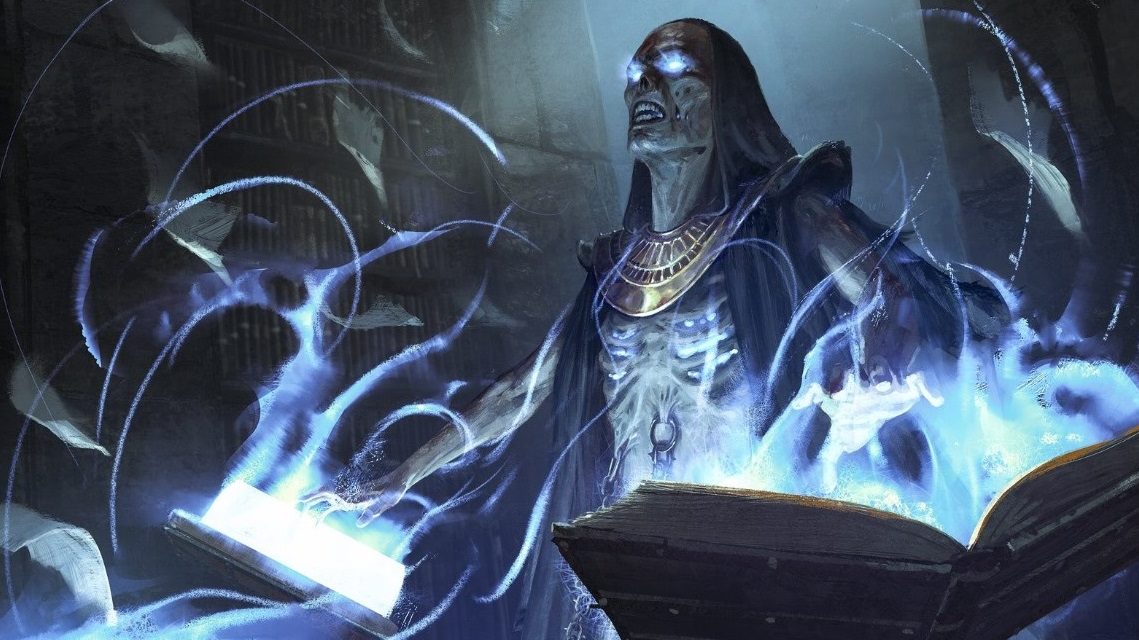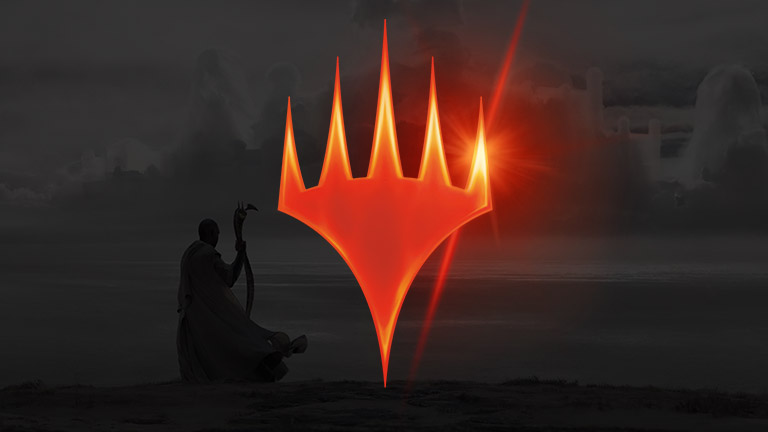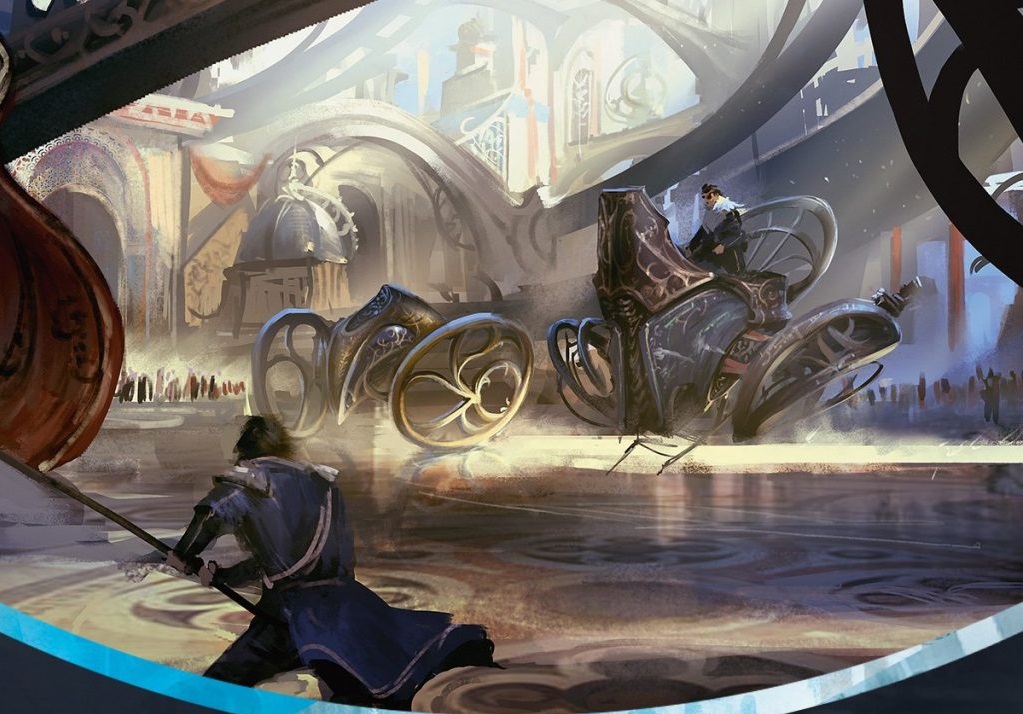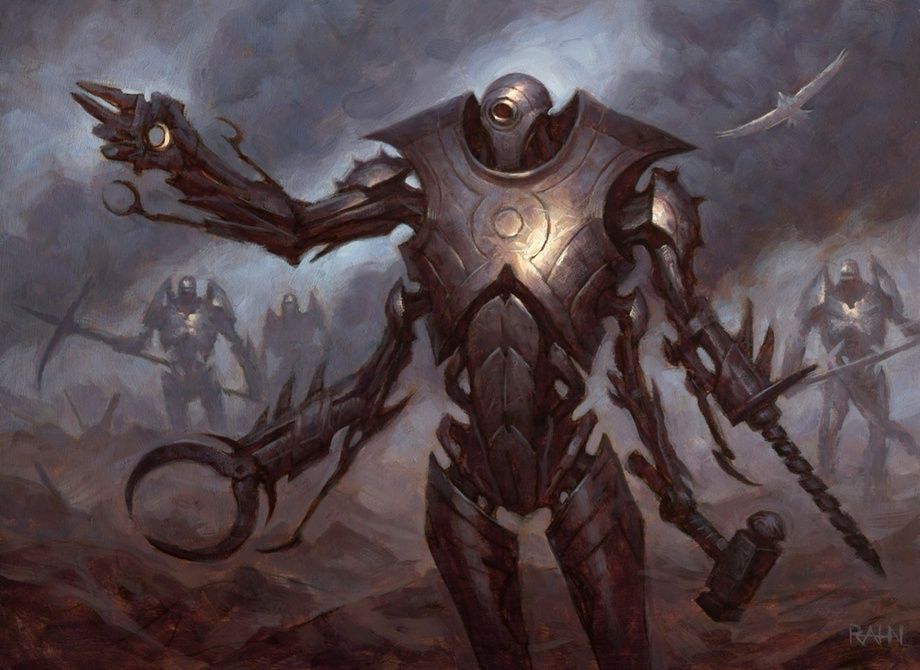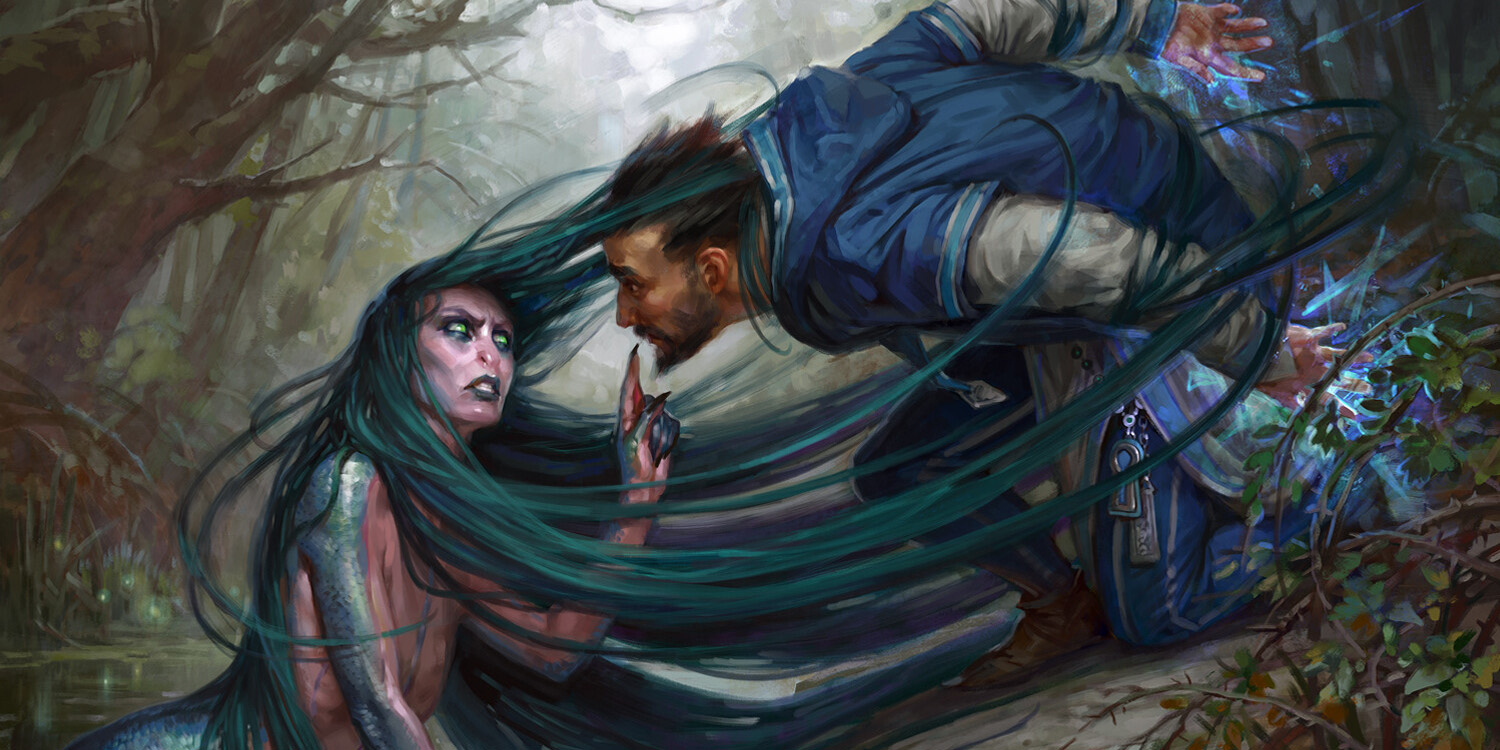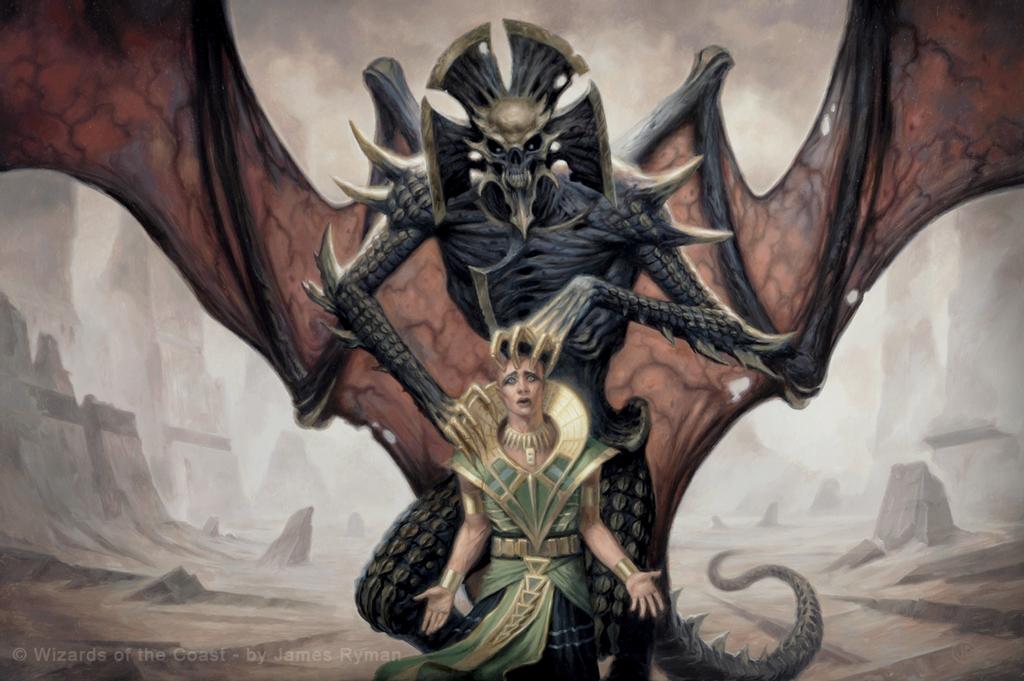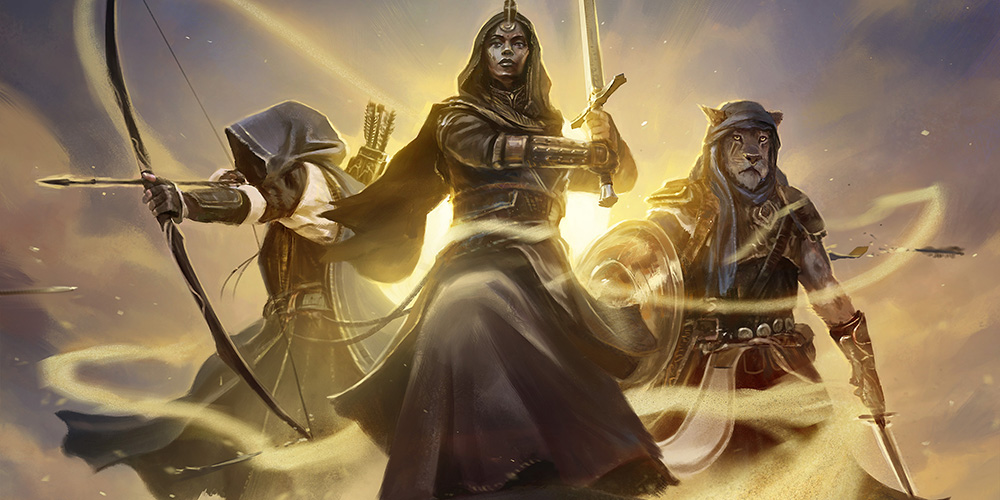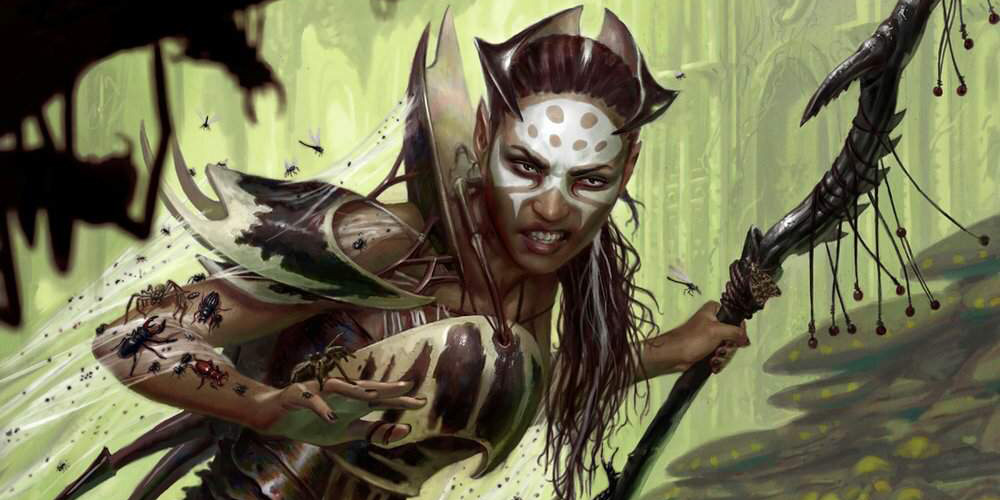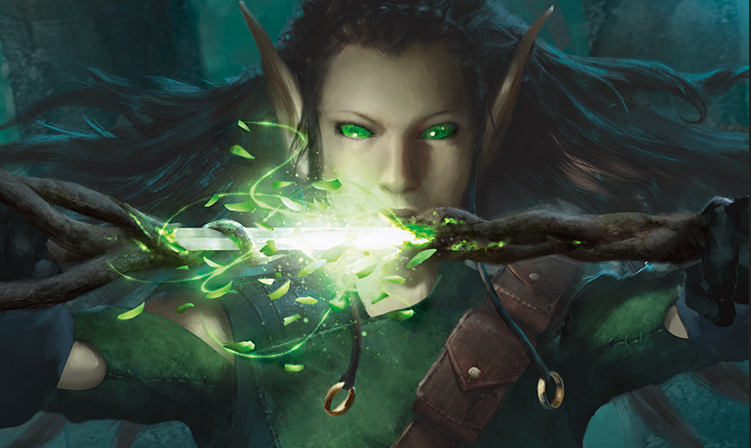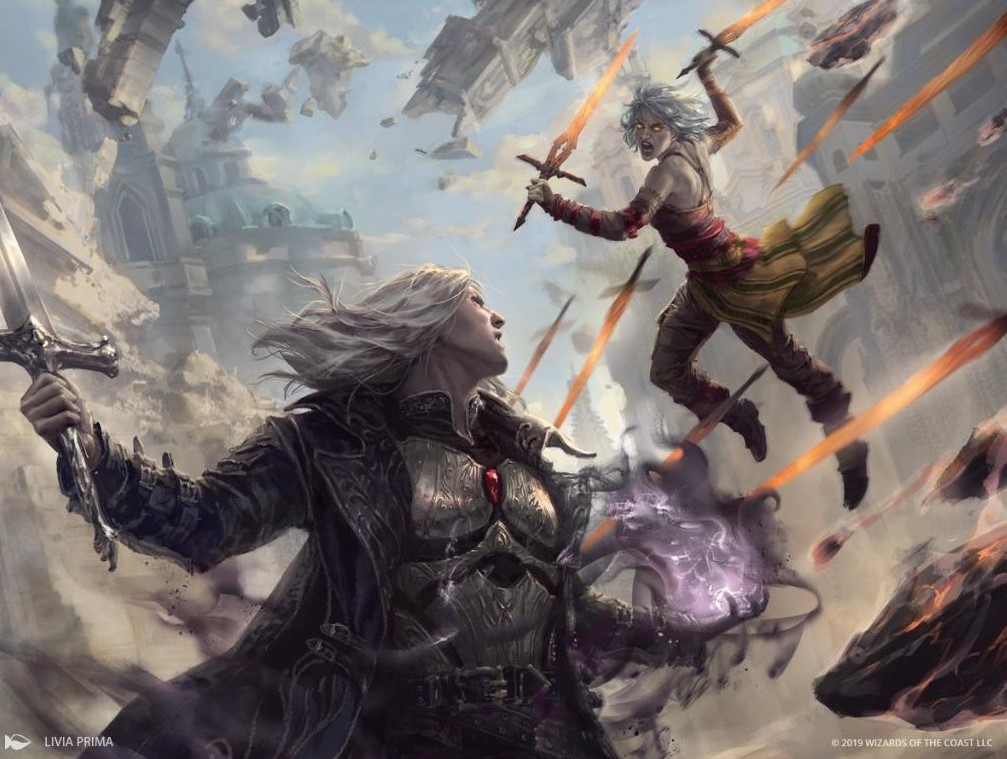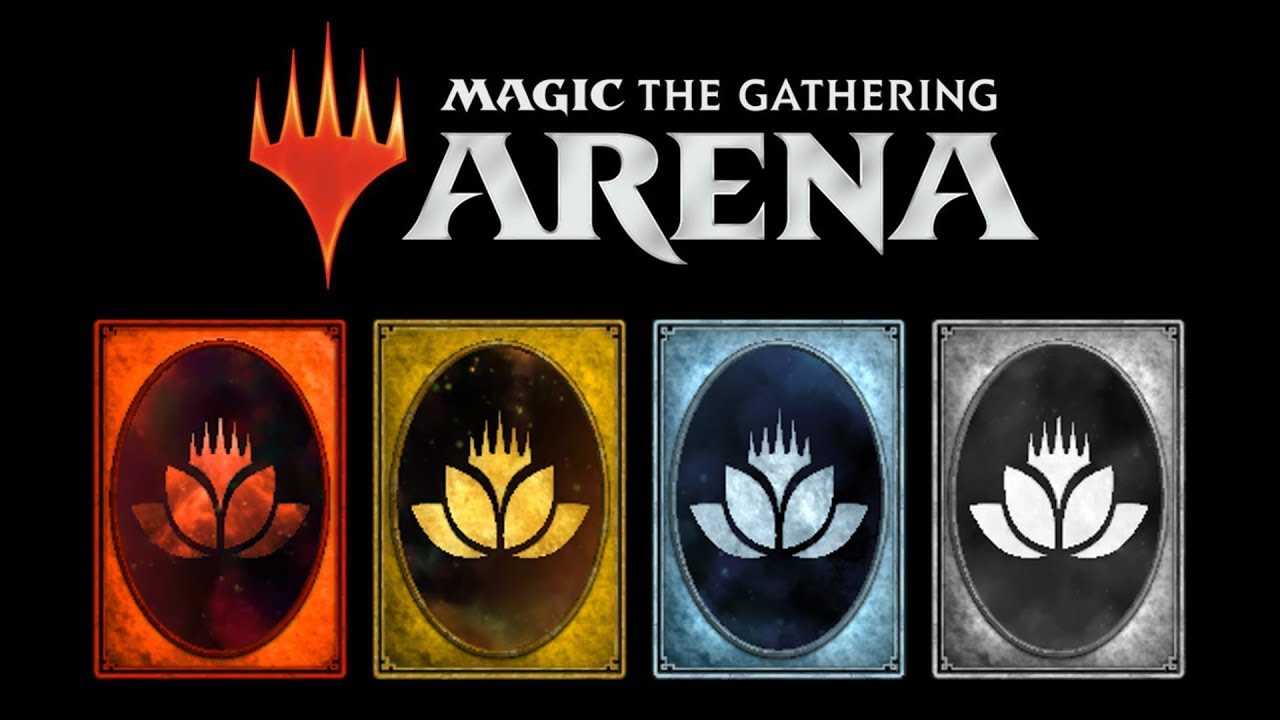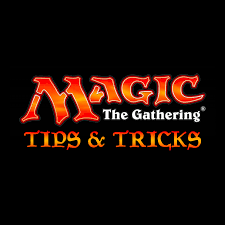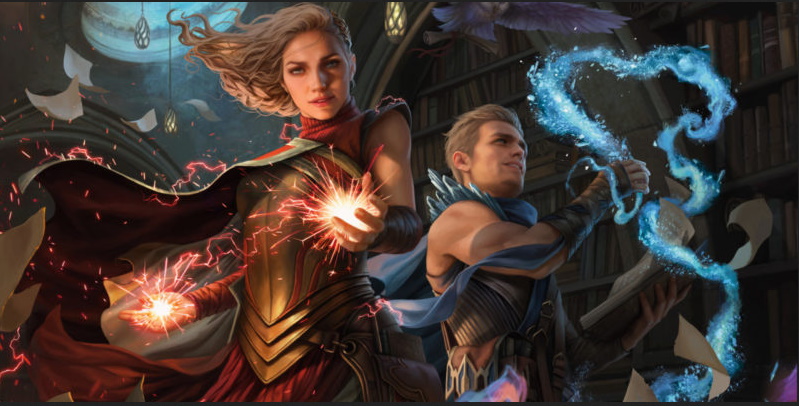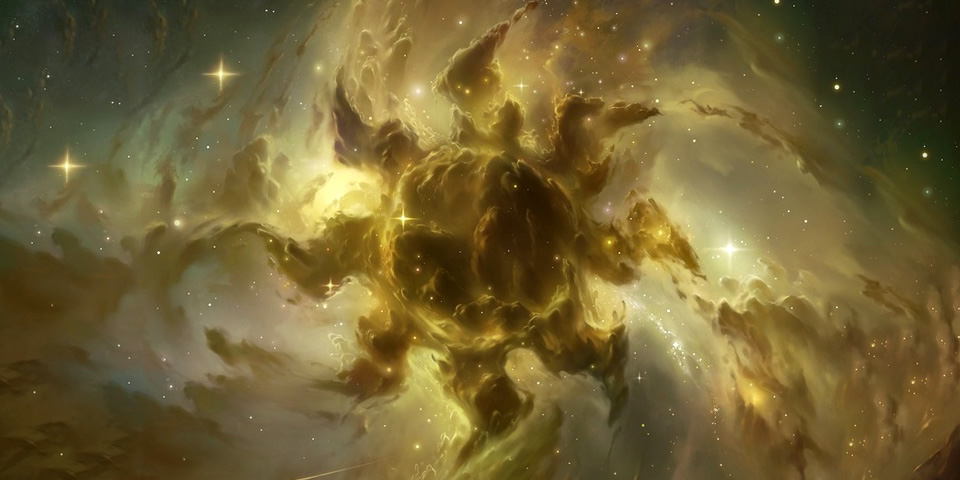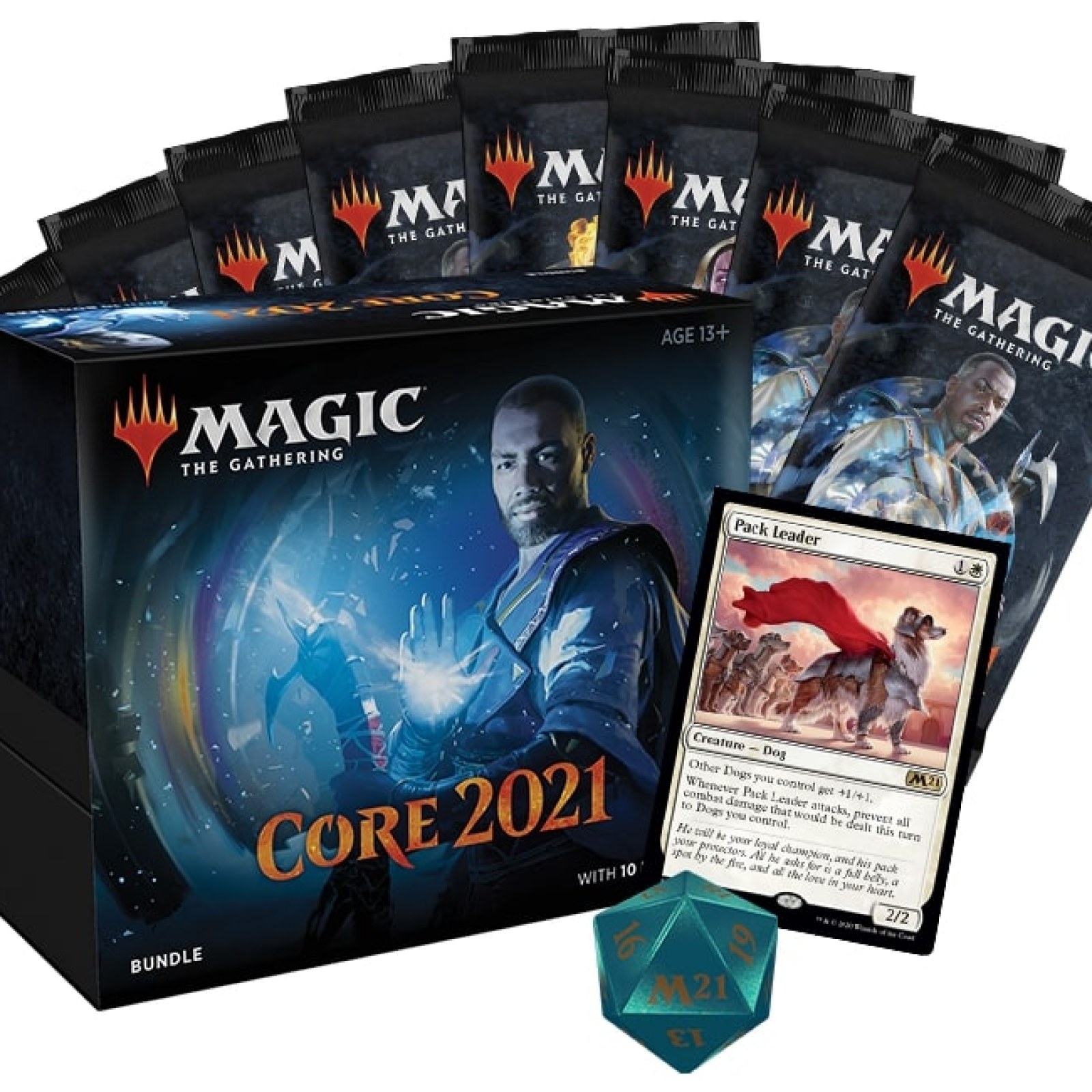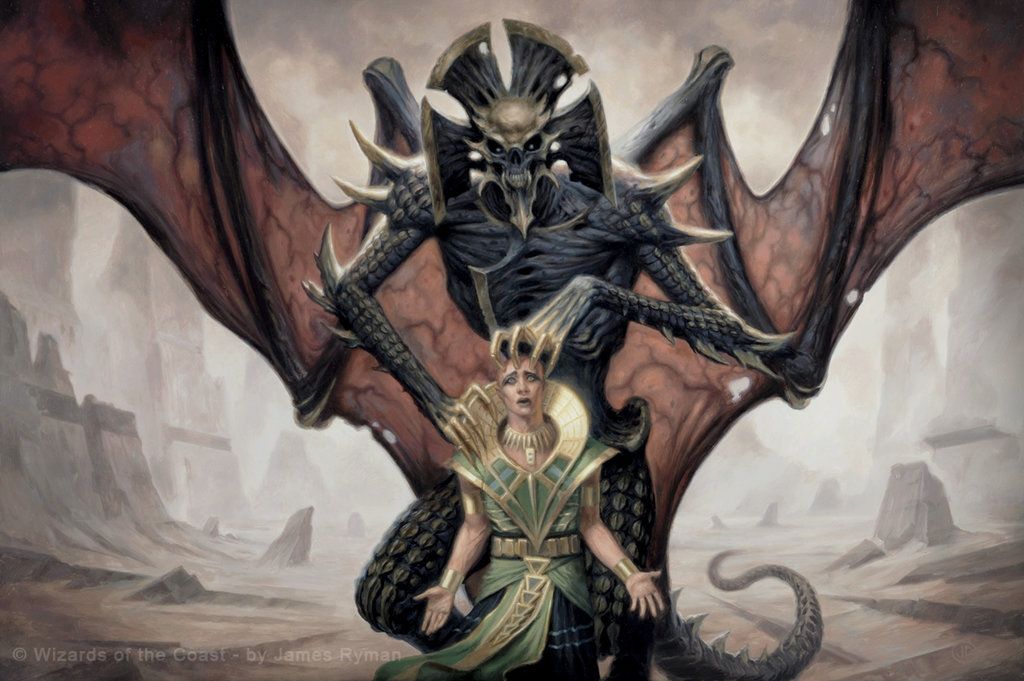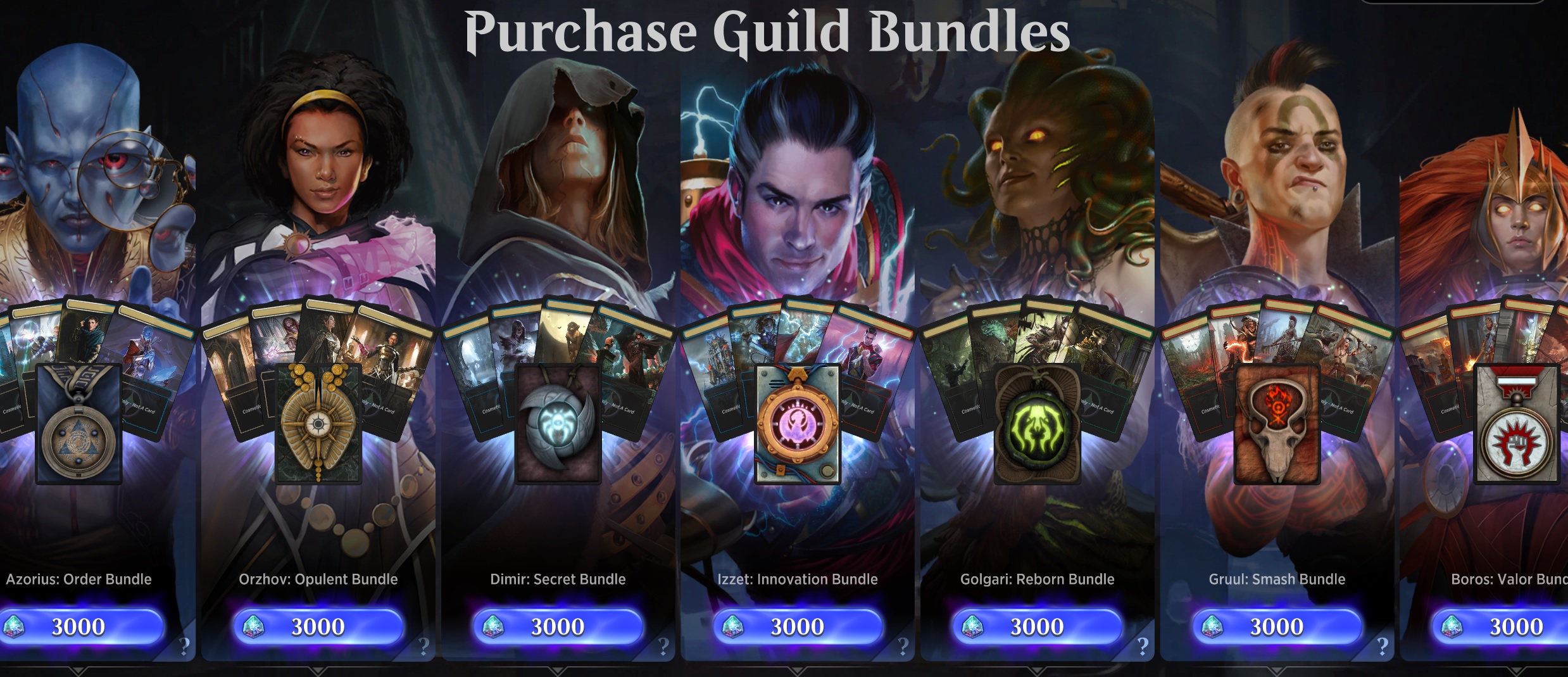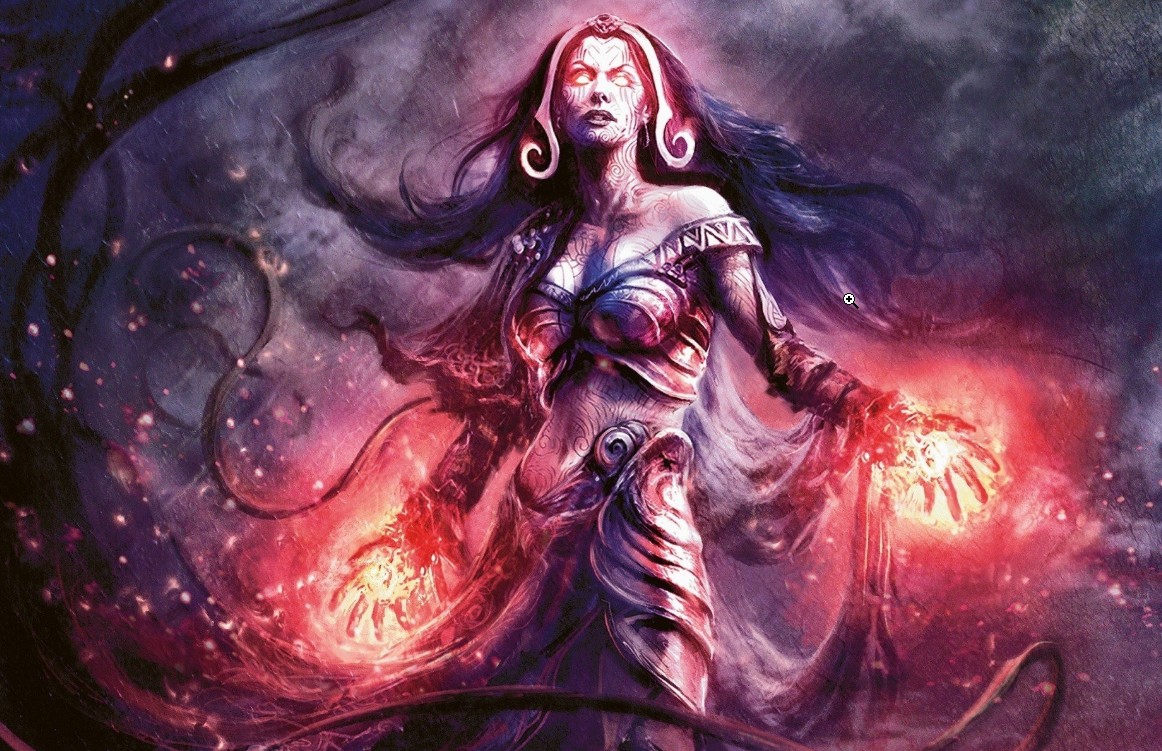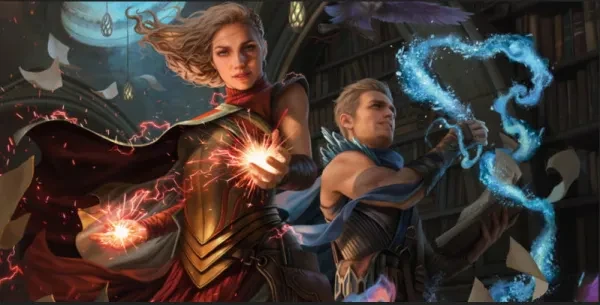
Magic: The Gathering Arena's meta gets shaken up so often it would explode if it was a soda. Shake ups sometimes happen because of new sets being released. However, Wizards of the Coast (WoTC) isn't above banning cards that it considers problematic for the current meta to remain viable. It doesn't matter if you're a casual player, newbie, or competitive junkie. Knowing the meta can help you win more games. These are the most popular decks for the Best-Of-One Standard format on MTG Arena.
10. Mono-Red Aggro (Red Deck Wins/RDW)

In almost every standard iteration of the game, some form of mono-red aggro has been a viable build. This particular build has been steady in its appeal ever since Throne of Eldraine (ELD) dropped. In the current standard rotation, it relies heavily on creatures to dish out the damage.
What's Good About This Deck:
- Players have most of these cards already
- Best-of-One makes it almost impossible for an opponent to prepare for the deck
- Most players don't expect a mono-red build since it's been conspicuously absent from higher constructed levels
- It's relatively simple to learn how to pilot
How To Play This Deck Effectively:
- Your aim is to get in as much damage as quickly as possible.
- Your prime source of damage is your creatures.
- Low-cost creatures like Fireblade Charger and Fervent Champion will allow you to deal significant damage before your opponent can find answers.
- Removal in the form of Bonecrusher Giant and Frost Bite ensures your creatures land hits every turn.
- Anax, Hardened in the Forge gives your creatures resilience against board wipes.
- Torbran increases your damage output. He doesn't even need to attack, and it may be better in most situations to keep him back when the team swings.
- Embercleave is a finisher that most opponents expect, but few are prepared to deal with. Hold it back in reserve and cast it right before damage is dealt, targeting an unblocked creature for maximum effectiveness.
- Faceless Haven gives a way to close out the game after a board-wipe. Remember to run snow-covered lands, or else Haven is useless.
Decklist:
- 4 Anax, Hardened in the Forge
- 4 Bonecrusher Giant
- 2 Castle Embereth
- 4 Embercleave
- 4 Faceless Haven
- 4 Fervent Champion
- 3 Fireblade Charger
- 4 Frost Bite
- 3 Hall Monitor
- 2 Rimrock Knight
- 4 Robber of the Rich
- 19 Snow-Covered Mountain
- 3 Torbran, Thane of Red Fell
9. Sultai Ultimatum
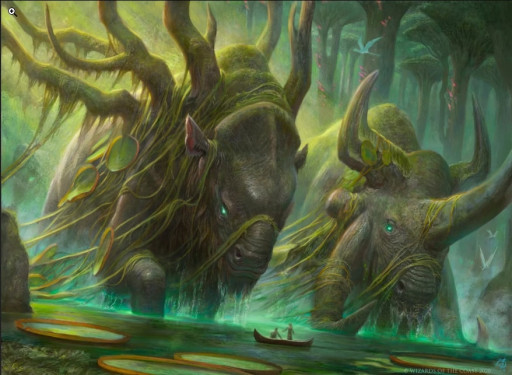
Sultai Ultimatum is one of the most devastating decks to run into on the ladder. It's hard to pin down the archetype of the deck, although most would agree it has a lot of toolbox elements. The deck typically comes in two versions. The companion version runs Yorion along with an 80-card main deck. The non-companion version prefers Polukranos Unchained along with heavy threats in the early into mid-game. Both versions run decent amounts of ramp. It's not precisely a beginner-level deck because it requires you to understand card interactions to pilot it successfully.
What's Good About This Deck?
- Requires a bit of thinking.
- Toolbox strategy has answers to almost everything.
- New iterations of this deck have access to the sideboard in Best-Of-One thanks to the Learn mechanic.
- Powerful and resilient.
- It's a lot of fun once you figure out card synergies.
How To Play This Deck Effectively
- Ramp early and often. Casting spells like Wolfwillow Haven and Cultivate gets lands onto the field much faster than you would regularly.
- Know your deck's abilities. Don't bother to cast Yorion if you have nothing on the field worth blinking, for example.
- Get rid of threats as they appear. The current meta has many creatures that can be a real nuisance if left on the field too long.
- Know the spells you want to search for. Ultimatum is a tutor for permanents. Unfortunately, that means you can't get an Alrund's Epiphany with it. However, you CAN get a Professor Onyx or a Kiora Bests the Sea God.
- Ultimatum only hits mono-colored targets. These decklists usually provide you with enough mono-colored targets for you to hit. If you're building your own, keep this in mind.
Decklist:
- 1 Valki, God of Lies
- 1 Quandrix Cultivator
- 1 Vorinclex, Monstrous Raider
- 2 Polukranos, Unchained
- 3 Elder Gargaroth
- 1 Eliminate
- 1 Disdainful Stroke
- 2 Jwari Disruption
- 3 Mystical Dispute
- 4 Heartless Act
- 1 Pelakka Predation
- 2 Alrund's Epiphany
- 2 Extinction Event
- 2 Shadows' Verdict
- 2 Sea Gate Restoration
- 4 Cultivate
- 4 Emergent Ultimatum
- 1 Kiora Bests the Sea God
- 4 Binding the Old Gods
- 4 Wolfwillow Haven
- 4 Omen of the Sea
- 1 Ketria Triome
- 2 Island
- 2 Swamp
- 3 Forest
- 3 Temple of Malady
- 4 Barkchannel Pathway
- 4 Fabled Passage
- 4 Clearwater Pathway
- 4 Zagoth Triome
- 4 Darkbore Pathway
8. Temur/Gruul Adventures

Have you ever been Eldraine-d to Death? ELD remains one of the most overpowered standard sets ever released. Several cards had to be banned from the set, making a case for the collection being far too OP for standard. The entire Adventure mechanic saw a massive amount of play before they banned one of the linch-pins of the deck, Lucky Clover. Despite this, Temur Adventures has remained consistently popular in the meta.
What's Good About This Deck
- Powerful cards that most people should have copies of by now if they play regularly.
- Very low average mana value for cards in the decklist.
- Efficient use of mana, as well as more than a fair amount of ramp and control for the early game.
- Good card-draw engine in Edgewall Innkeeper
- Able to close out a game quickly and effectively
How To Play This Deck Effectively
- Don't save your removal. Your Bonecrusher Giant is better at getting rid of threats than sitting in your hand waiting to burn the opponent out.
- Use your resources well. For example, Brazen Borrower is an excellent option for putting a planeswalker back in your opponent's hand to force them to recast it.
- Keep attacking, but be smart about it. You'll probably have threats that are larger than your opponents' on the field. So don't be afraid to throw your weight around.
- Your deck is best at closing out a game before it gets too late. The longer an opponent can hold out for, the better chances they'll have of finding an answer.
Decklist:
- 2 Koma, Cosmos Serpent
- 2 Klothys, God of Destiny
- 4 Lovestruck Beast
- 4 Bonecrusher Giant
- 4 Brazen Borrower
- 4 Llanowar Visionary
- 4 Edgewall Innkeeper
- 3 Fire Prophecy
- 2 The Akroan War
- 4 Lukka, Coppercoat Outcast
- 2 Mountain
- 2 Island
- 3 Forest
- 4 Riverglide Pathway
- 4 Fabled Passage
- 4 Cragcrown Pathway
- 4 Barkchannel Pathway
- 4 Ketria Triome
7. Izzet Goldspan

You're bound to get one control deck in the top ten, at least. This one has seen a lot of play because it's a relatively budget competitive deck. The deck takes advantage of Goldspan Dragon, a mythic from Kaldheim (KHM) that creates mana, ramps using that mana, and can attack the turn it comes down. Most experienced players consider the deck a tempo deck. It's not a simple deck to play, but it does pretty well at the lower levels of the ranked ladder.
What's Good About This Deck
- It uses a lot of common and uncommon cards. A few rares are scattered around, but you can probably build this deck using your KHM card pool.
- It's a control-style deck that can still deal with early threats. The problem that control has is that it can't handle aggro decks. This deck is an exception to that rule.
- It requires you to outthink your opponent. This is a double-edged sword. If you're not used to playing on your opponent's turns, you may struggle a bit with it.
- It uses the Foretell mechanic wonderfully. Foretell is a KHM mechanic that allows for spell cost reduction. It also gets the spell out of your hand, making it immune to discard.
How To Play This Deck Effectively
- Understand the dynamic of playing instant-speed spells. The rule of thumb is that you shouldn't play a spell until it's the last point in time to do so.
- Pay attention to your opponent. For example, if you're playing a mirror match and don't know if your opponent has a counterspell for your Dragon, you should pay attention to where they get priority.
- Don't try to counter everything. Most new players have an issue with this deck because they try to counter whatever their opponents cast. So be selective about your counterspell casting.
- This deck wants to win in the mid to late game. Therefore, the longer the game goes on, the better off you are. If you CAN close the game out early, however, do so. Never give your opponent a chance to recover.
Decklist:
- 1 Thryx, the Sudden Storm
- 2 Avalanche Caller
- 4 Bonecrusher Giant
- 4 Goldspan Dragon
- 4 Brazen Borrower
- 4 Mazemind Tome
- 1 Disdainful Stroke
- 3 Mystical Dispute
- 3 Saw It Coming
- 4 Frost Bite
- 1 Expressive Iteration
- 2 Alrund's Epiphany
- 1 Shark Typhoon
- 4 Snow-Covered Mountain
- 4 Fabled Passage
- 4 Riverglide Pathway
- 4 Faceless Haven
- 4 Volatile Fjord
- 6 Snow-Covered Island
6. Dimir Rogues
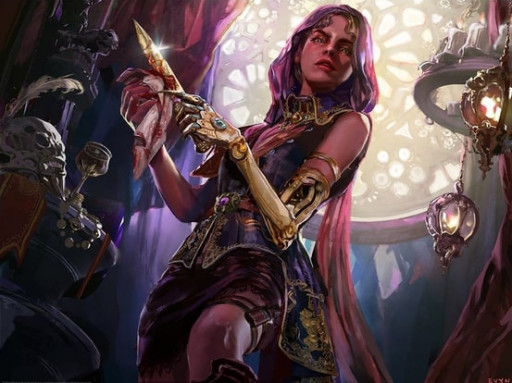
I can almost hear the collective sigh from all the people who have been playing in the standard queue recently. Dimir Rogues became a significant contender when Zendikar was released. The sets that came after it gave it a lot of support. These days, most Dimir rogues piles run Lurrus of the Dream Den to give their spells resilience and bring them back from the graveyard. They're a typical counter deck, but with a few twists that make it a consistent winner in many matchups.
What's Good About This Deck
- This deck isn't so wildcard-intensive to construct. It does require a few rares, but the mana-base is where most of them go. A budget mana base would make it slightly less consistent but still playable.
- It's a fun deck for control players. The deck offers several premium counterspells, utilizing the mill mechanic to power up their threats.
- The deck is a combined aggro and control archetype. Players who have enjoyed one of the two styles but want to see how the other works could enjoy seeing how the other half lives.
- The deck has a built-in alternative win condition. Milling is meant to enhance the deck's threats, but it can be a win condition all its own in the right circumstances.
How To Play This Deck Effectively
- Attack early, attack often. The deck does a lot of early damage and sets you up for a quick win if you get threats swinging early. Every time you attack or cast a rogue spell, you'll also be depriving your opponent of resources through targeted mill.
- Play on your opponent's turn. Most of the spells you have are instants or have flash (in the case of creatures). So you never want to tap out on your turn. Leaving mana up allows you to counterspell if you need to.
- Don't rely too heavily on one method of winning. Mill hasn't been consistent as a win condition until quite recently. Seeing a single land fetch net you between nine and eighteen cards in your opponent's graveyard with the proper setup is simply amazing.
Decklist:
- 4 Merfolk Windrobber
- 4 Ruin Crab
- 4 Soaring Thought-Thief
- 4 Thieves' Guild Enforcer
- 1 Mystical Dispute
- 1 Didn't Say Please
- 1 Disdainful Stroke
- 1 Eliminate
- 1 Baleful Mastery
- 3 Heartless Act
- 4 Into the Story
- 4 Drown in the Loch
- 2 Agadeem's Awakening
- 2 Of One Mind
- 1 Castle Locthwain
- 3 Temple of Deceit
- 3 Zagoth Triome
- 3 Swamp
- 4 Fabled Passage
- 4 Clearwater Pathway
- 6 Island
5. Jeskai/4-Color Cycling

While this isn't the Tour de France, MTG has its share of cycling. The mechanic has shown up several times in Magic's history, with its latest iteration being in Ikoria, Lair of Behemoths (IKO). Cycling allows a player to discard a card and draw another while paying the ability cost on the card. This set has seen low-cost cycling abilities, with some utilizing a single generic mana. These payoffs in several colors make cycling a viable mechanic.
What's Good About This Deck
- Another relatively budget deck that sees significant play. Most players already have cards for this deck. Some of the more critical cards are only at uncommon rarity, making the deck easy to build.
- Drawing ALL the cards. Everyone likes drawing cards. This deck has the potential to draw you your entire deck.
- Multiple win conditions. Prefer hitting with a HUGE threat on board? Flourishing Fox has your back. What about burning your opponent out or having an army of 1/1 tokens? The deck has so many ways to win that it's never caught out.
- It's easy to learn to play. Cycling isn't a hard mechanic to get. Even new players will take to this deck easily.
How To Play This Deck Effectively
- Stick your threats on the field before you start cycling whenever you can. All your threats take advantage of the cycling mechanic. You CAN win without your on-board threats, but it's likely to take you a long time to do so. Instead, you'll surprise your enemies by casting a timely Zenith Flare, provided that they don't exile your graveyard.
- Cycling is an ability, meaning it can be done during your opponents' turn. Some cards like Valiant Rescuer only count the first card cycled on a turn. It doesn't have to be YOUR turn.
- Know how your deck works against the meta. For example, Lurrus allows you to cast your threats from the graveyard, so keeping him as a companion may have its benefits.
Decklist:
- 4 Flourishing Fox
- 4 Irencrag Pyromancer
- 4 Valiant Rescuer
- 4 Drannith Stinger
- 2 Negate
- 4 Startling Development
- 4 Zenith Flare
- 3 Go for Blood
- 4 Boon of the Wish-Giver
- 4 Memory Leak
- 4 Improbable Alliance
- 1 Clearwater Pathway
- 1 Blightstep Pathway
- 1 Brightclimb Pathway
- 4 Riverglide Pathway
- 4 Raugrin Triome
- 4 Needleverge Pathway
- 4 Hengegate Pathway
4. White Weenie
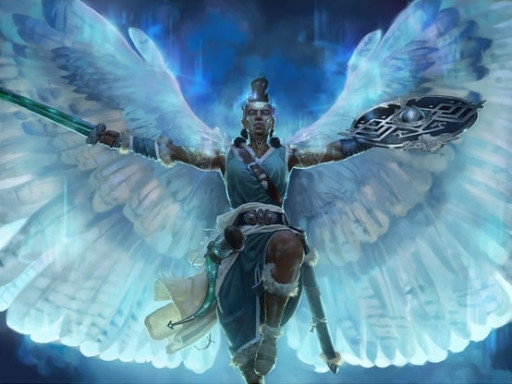
White Weenie is one of the most resilient white archetypes that you'll find in the game. The latest version sometimes runs Lurrus of the Dream Den to help with removal. Alternatively, they'll run Luminous Broodmoth for the same reasons. Newer versions of this deck also run Reidane, God of the Worthy, to slow down opponent snow-based decks. In addition, the deck runs tiny creatures that slowly grow into significant threats. It also includes a hearty slice of lifegain, making it resilient against other decks.
What's Good About This Deck
- Very straightforward. It relies on the time-honored technique of killing your opponent by reducing their life to zero.
- Lifegain makes it great for newer players - even players that don't have a lot of experience with Magic could appreciate the deck's ability to keep them alive.
- Triggered abilities make for a synergistic build. Between lifegain and +1/+1 counters, the deck is a formidable one to come up against.
- Taxes hit most of the meta. A lot of people have switched their traditional lands out for snow-covered lands. Reidane makes it much harder for those decks to function.
How To Play This Deck Effectively
- Curve into your board. The deck runs a perfect curve of creatures, and having threats pressing your opponent from early on is essential to picking up a win.
- Remember that Alseid of Life's Bounty and Selfless Savior are protectors. They don't need to smash in later on in the game. Just keeping them up could blank one of your opponent's removal spells.
- Faceless Haven represents a land that can attack. So, even if you have no creatures on board, you can swing in for the win.
- Maul of the Skyclaves gives a creature flying when it comes in. use it to push through the last bit of damage after your opponent has blockers up.
Decklist:
- 2 Legion Angel
- 2 Drannith Magistrate
- 3 Reidane, God of the Worthy
- 4 Selfless Savior
- 4 Alseid of Life's Bounty
- 4 Giant Killer
- 4 Elite Spellbinder
- 4 Skyclave Apparition
- 4 Seasoned Hallowblade
- 4 Luminarch Aspirant
- 1 Maul of the Skyclaves
- 4 Faceless Haven
- 20 Snow-Covered Plains
3. Rakdos Midrange/Sacrifice
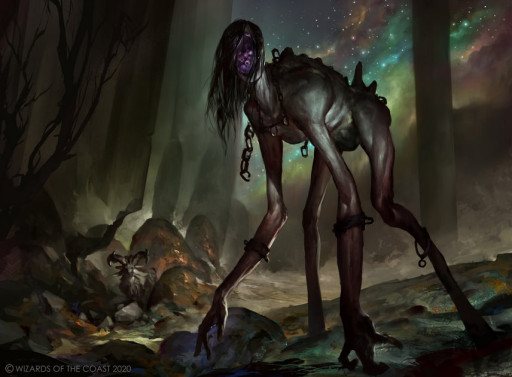
If you hate cats, you’d have probably been hating on this deck way before it was this popular. The deck became popular before the banning of Cauldron Familiar. Since then, it's waned in appeal, with fewer people spending time learning and playing it. It's still an impressive deck, and with the right pilot, it can be a terrible opponent to play against. It can take your creatures and sacrifice them or make your hand disappear in a matter of turns. Despite its low popularity, it's still terrible to run up against.
What's Good About This Deck
- It's not a very common deck to run into on the ladder, meaning that opponents may not know how to approach beating it.
- It deals with both on-board threats as well as in-hand threats through discard and removal.
- It has threats that come with upsides. Woe Strider can streamline the deck's draws. Ox of Agonas usually comes in when your hand's empty and refills it.
- It has resilience. Cards like Kroxa and Ox of Agonas can come back from the graveyard, making the deck resilient to non-exile removal.
How To Play This Deck Effectively
- Use your threats in combination with your spells. Don't just cast a Claim the Firstborn unless you have a Woe Strider or Immersturm Predator to eat it, for example.
- Learn how to take advantage of triggers. For example, Village Rites can net you free cards if you target Kroxa before sacrificing it. Of course, it'll get sacrificed anyway; you might as well get something for it.
- Remember your resiliency. Arena is good at helping you remember what you have in your graveyard that can come back. Try not to exile those cards when paying escape costs.
- You can counter most other decks through your card advantage and abilities. Be aware of what your opponent is playing and work around it. Discard your control opponent's hand. Kill your midrange opponent's creatures. Your big threats can usually withstand any aggro decks.
Decklist:
- 1 Rankle, Master of Pranks
- 1 Immersturm Predator
- 1 Ox of Agonas
- 2 Skyclave Shade
- 3 Kroxa, Titan of Death's Hunger
- 4 Woe Strider
- 4 Bonecrusher Giant
- 4 Mire Triton
- 1 Kazuul's Fury
- 2 Heartless Act
- 4 Village Rites
- 2 Shatterskull Smashing
- 4 Claim the Firstborn
- 3 Tymaret Calls the Dead
- 3 The Akroan War
- 2 Castle Locthwain
- 2 Temple of Malice
- 3 Mountain
- 4 Fabled Passage
- 4 Blightstep Pathway
- 6 Swamp
2. Boros Winota Aggro
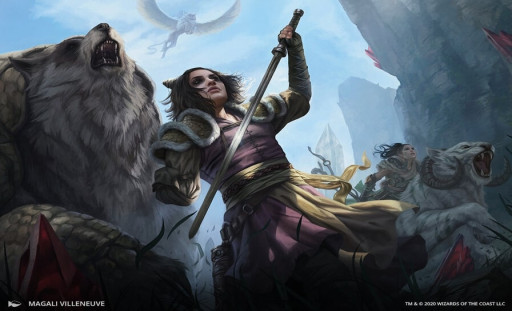
Winota was a terror of standard a few seasons ago with access to permanent-steal through Agent of Treachery. Since that card rotated, Wintoa hasn't been as popular. In addition, the lack of really game-changing threats in red and white has seen her slip down the popularity ranks. However, additions from Strixhaven (STX) have seen new life breathed into this aggro deck. As a result, the deck has been seeing much play in the middle of the ranked ladder.
What's Good About This Deck
- It uses a fair few STX cards, making it approachable as a competitive deck for newer players.
- The power level is immense. It doesn't need the title creature to function, but when she does, she can swing a game in your favor.
- It's a simple deck to pilot since most times, it's all about attacking every turn without caring for consequences.
- Winota's getting her last run in Standard before she rotates and seems to still be a force to be reckoned with.
How To Play This Deck Effectively
- Keep putting threats on the board but within reason. It's straightforward to blow out this deck with a few well-timed board wipes.
- Watch your opponent's field. While they might not have the opportunity to attack through you in the early game, triggered abilities could cause serious damage.
- Don't focus too much on Winota, Joiner of Forces. While she is in the deck's title, she's more of a benefit than a necessity for the deck to win games.
- Run out your non-human creatures first wherever necessary. They'll trigger your Winota when they attack.
- Don't underestimate Blade Historian. The card turns all your creatures into double-strikers, allowing you to close out a game or attack advantageously. Remember, his ability ONLY works with attacking creatures.
Decklist:
- 2 Furycalm Snarl
- 4 Rimrock Knight
- 4 Skyclave Apparition
- 4 Needleverge Pathway
- 4 Bonecrusher Giant
- 4 Blade Historian
- 4 Selfless Savior
- 4 Elite Spellbinder
- 7 Mountain
- 11 Plains
- 4 Winota, Joiner of Forces
- 4 Professor of Symbology
- 4 Clarion Spirit
1. Mono-Black Control

Older versions of mono-black control ran Hateful Eidolon, but this deck dispenses with creatures almost entirely. It runs a couple of copies of Murderous Rider (for targeted removal) and Solemn Simulacrum (for card draw/ramp) but mostly avoids them. The win-condition is Professor Onyx and Ugin, the Spirit Dragon. Consistent life gain such as Mazemind's Tome, along with hand-destruction effects like Duress, sets up great turns later on. Cling to Dust removes things that opponents may want to bring back from the graveyard while offering good card-draw and life gain on its own.
What's Good About This Deck
- It's not a typical deck. Most players probably won't know how to approach a deck like this. Control will fold because of hand destruction, and aggro/midrange will likely see their creatures wiped consistently.
- The deck is versatile. The deck likes playing the long game but has control elements to ensure that it gets there to win.
- It's simple. There's no need to worry about complicated mana fixing. You'll likely be able to cast all the spells you need.
- It's flashy. Professor Onyx and Ugin are pretty flashy win conditions. Usually, once Ugin resolves opponents scoop.
How To Play This Deck Effectively
- Discard as early as possible.
- Exile problem cards in graveyards for advantage. Remember, Cling to Dust can target your own graveyard as well. Try not to exile any recursive cards you might have.
- Stay alive efficiently. Your life is a resource as well. Use it so that you get maximum value out of your board wipes.
Decklist:
- 4 Crawling Barrens
- 16 Swamp
- 2 Shadows' Verdict
- 2 Ugin, the Spirit Dragon
- 4 Solemn Simulacrum
- 2 Cling to Dust
- 4 Mazemind Tome
- 3 Extinction Event
- 2 Eliminate
- 2 Murderous Rider
- 2 Elspeth's Nightmare
- 4 Heartless Act
- 2 Duress
- 2 Hagra Mauling
- 4 Bloodchief's Thirst
- 4 Castle Locthwain
- 1 Professor Onyx
An Exciting July
While it’ll be a while before we see the more popular decks rotate, this month is likely to be pretty intense on the ranked ladder. These decks are based on their appearance across the entire meta. Do you think I missed some of them? Which decks are the ones you run into the most often on the ranked ladder in Arena?
You may also be interested in:
- The 10 Best MTG: Arena Decks
- MTG Arena Guide, Tips and Tricks
- Best Ways to Get Wildcards in MTG Arena
- [Top 7] MTG Arena Best Artifact Decks That Wreck Hard!
- [TOP 5] MTG Arena Best Control Decks
- [Top 10] MTG Arena Best Historic Decks That Wreck Hard!
- MTG Arena Best Packs To Buy – A Guide for Beginners and Intermediate Players
- MTG Arena: Best Ways to Get Cards
- Top 15 Best MTG Arena Mythic Rares
- MTG Arena Ranking System Explained
- The Best Singleton Decks in MTG Arena
- [Top 5] Best MTG Arena Aggro Decks
- [Top 5] MTG Arena Best Angel Decks
- [Top 10] MTG Arena Best White Decks
- [Top 10] MTG Arena Best Black Decks

